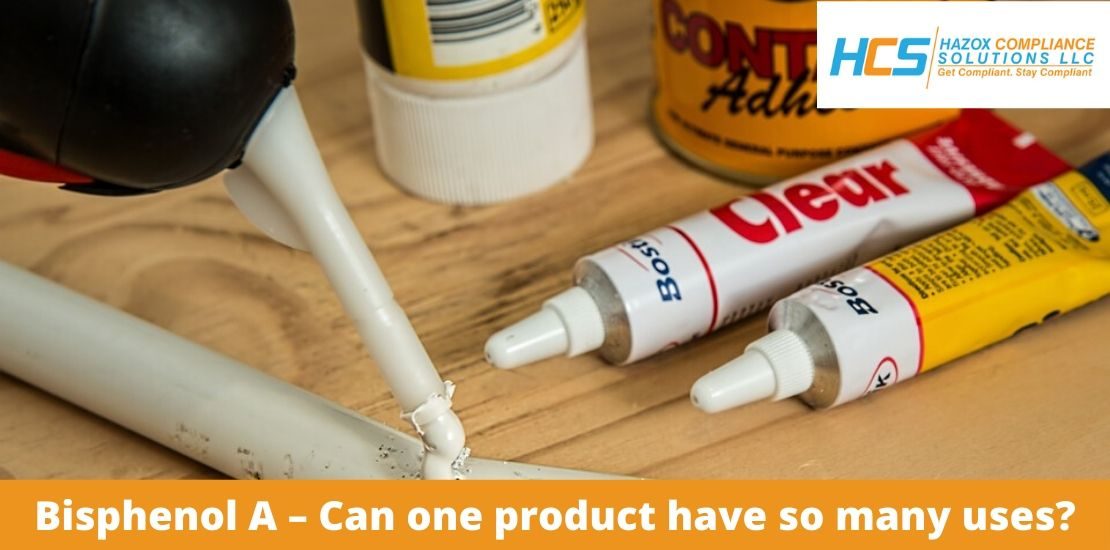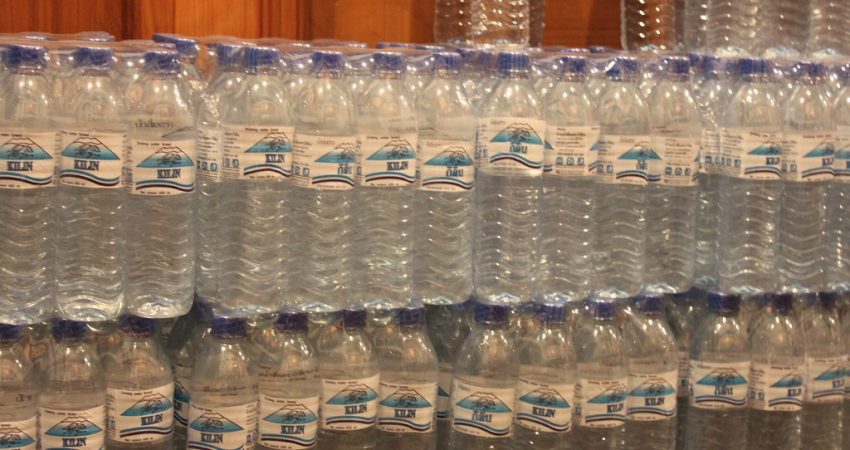- February 26, 2020
- Posted by: admin
- Category: Blogs

Since its synthesis in 1891, Bisphenol A has been used for a variety of purposes over time. Nowadays, the main use of Bisphenol A (BPA) is as an intermediate ingredient in the production of polycarbonate and epoxy resins. (You can read about how the uses of BPA have changed throughout history at https://www.hazoxinc.com/bisphenol-a-almost-130-years-old-and-still-very-much-in-demand/).
Polycarbonate sheets are widely used in solar glazing and in construction, greenhouses and architectural coatings as well as in items such as security glass, bank teller shields, hurricane shutters and convenience stores glazing. This is due to the almost unbreakable, bullet resistant, lightweight protective layers provided by the polycarbonate sheet.
Polycarbonate films are also widely used in signage and can be found on road signs and large advertising banners. Signs made with BPA create a UV-resistant product with excellent weathering resistance.
Another widespread use of BPA is in the preparation of epoxy resins. These are used in many architectural applications such as exterior coatings, floor sealants and other surfaces because it offers high resistance. In industry, epoxy resins are used to make molds and castings, and for the consumer, it is be found in the coating for washing machines, dryers and other household appliances. BPA can also be found in the lining of steel pipes and fittings used to transport oil, gas or drinking water.
Most of the adhesives known as “structural” or “engineering” adhesives are epoxy. These high-performance adhesives are used in the manufacture of airplanes, cars, bicycles, boats, golf clubs, skis, snowboards, laminated woods used in home construction, and other products where a strong bond is essential. Epoxy resins can bond to wood, metal, glass, stone and some plastics, and many are more resistant to heat and chemicals than standard glues.
Generally, these industrial applications have a fairly low direct impact on human health, however, workers exposed to these substances must take special care and follow strict safety measures to reduce exposure to this substance.

Consumer exposure to BPA comes predominantly from food packaging materials that contain BPA. The chemical has been shown to leach out of the coating on the packaging and into the food (https://www.niehs.nih.gov/health/topics/agents/sya-bpa/index.cfm). Some examples where this is found include the linings inside canned foods and beverages such as fruits, vegetables, soups, baby formula, soft drinks and beer.
For several of these products, there are now non-BPA(or BPA free) alternatives that can help reduce exposure. In 2011, the EU banned the use of BPA in plastic baby bottles (https://ec.europa.eu/commission/presscorner/detail/en/IP_11_664) followed by the FDA in 2012 (https://www.nytimes.com/2012/07/18/science/fda-bans-bpa-from-baby-bottles-and-sippy-cups.html). However, using BPA-free chemicals is considered insufficient as it does not consider the effects that these alternatives may have on consumers (https://www.scientificamerican.com/article/bpa-free-plastic-containers-may-be-just-as-hazardous/).
Another less known use of BPA is in thermal paper. Thermal paper is coated with a powdered form of BPA that when handled can come off and be absorbed through the skin. (https://www.consumerreports.org/cro/news/2014/03/the-health-risk-of-bpa-in-receipts/index.htm). Although mainly known for its use in receipts, this type of paper is also used in train tickets, labels on prescription medicines, luggage tags and food packaging materials for deli meats and cheeses. An easy way to identify thermal paper is to scratch the printed side of the paper. If you see a dark mark, the paper is thermal. Due to the health risks of BPA, an EU-wide ban on the use of bisphenol A (BPA) in thermal paper entered into force in January 2020(https://newsletter.echa.europa.eu/home/-/newsletter/entry/moving-away-from-bpa-in-thermal-paper).
Various measures are in place to control consumer exposure to BPA. For example, there are strict limits on the amount of BPA that can migrate from food and toy packaging material (https://ec.europa.eu/growth/content/bisphenol-bpa-strictly-limited-toys-1_en). Based on the most recent data and the current European standard, no adverse effects of exposure to BPA from these sources are expected for consumers. However, recent animal studies have indicated possible adverse effects on the development of the immune system at exposure levels lower than those used to derive the current European standard (https://www.ncbi.nlm.nih.gov/pmc/articles/PMC2805986/). These findings are of concern for the exposure of the fetus, infants and young children.
BPA is known to be hazardous to human, fish and other animal reproductive systems and has been linked with obesity and attention disorders.
In tomorrow’s article we will look at the health effects in more detail.
On Friday 21st, we will look at the regulations affecting BPA
On Monday 24th, we will be looking at storing, handling and disposing of BPA safely.
On Tuesday 25th, we will look at occupational exposure data for BPA, first aid measures when exposed to BPA and suitable personal protective equipment when using BPA.
On Wednesday 26th, we will look at fire precautions when using BPA
On Thursday 27th, we will look at the effects of BPA in the environment
In the last of this series, on Friday 28th , we will look at alternatives to BPA.
If you have missed the first article in the series, where we introduced you to the chemical BPA, you can catch up here (https://www.hazoxinc.com/bisphenol-a-an-old-chemical-with-new-restrictions/).
If you liked our article, please give us a Like and follow us on:
Facebook: https://www.facebook.com/HazoxComplianceSolutions
Twitter https://twitter.com/Hazox_Inc
LinkedIn https://www.linkedin.com/company/hazoxcompliancesolutions
Youtube: https://www.youtube.com/channel/UCIeBucyOUEtQFSAymS3TwQQ
